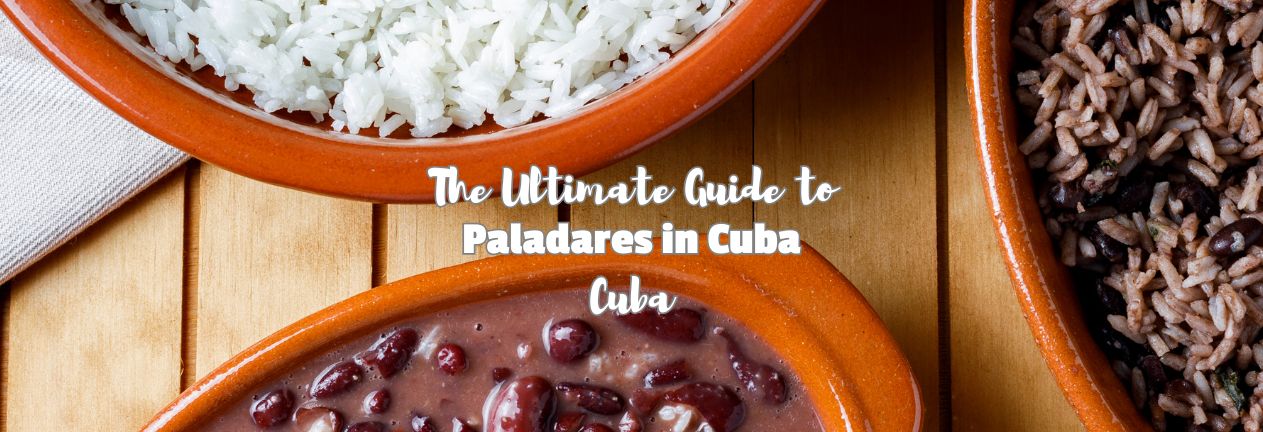If you’re planning a trip to Cuba and want to experience the island beyond the resort buffets and government-run restaurants, you need to find a paladar. These privately owned restaurants are one of Cuba’s best-kept (and best-tasting) secrets—offering not just home-cooked meals, but an intimate look into Cuban resilience, creativity, and hospitality. In this article, we’ll dive into what paladares are, where they came from, and why they’re a must-try for curious visitors looking to truly savor the island truly.
THIS POST MAY CONTAIN COMPENSATED AND AFFILIATE LINKS. MORE INFORMATION IN OUR DISCLAIMER
What Is a Paladar?
A paladar is a privately run restaurant in Cuba, typically family-owned and sometimes operated in someone’s home. Unlike state-run eateries, paladares offer personalized service, family recipes, and settings that range from cozy patios to elegant colonial mansions. They’re where you’ll taste the real flavors of Cuban life—both literally and culturally. Everyone who’s working in a paladar is working for the success of it. Unlike many government-run cafes and restaurants, they’re not just earning the Cuban minimum wage.
PRACTICAL TRAVEL TIPS
- 🛡️ Get Travel Insurance: Civitatis includes medical expenses, repatriation, theft, luggage delays. No deductibles or upfront payments. Get a quote here. .
- 🛂💻 Buy your Cuba eVisa here.
- 🔌 Be ready for the plug, socket & power situation.
- 📶 Internet, maps, data on the go. Buy an eSim for Cuba. Or pre-order a physical SIM card
- 🔒 Do NOT leave home without a VPN. Buy for your trip here.
Why Are They Named Paladares?
The word paladar means “palate” in Spanish, but the origin of the term in Cuba has a more colorful story. In the 1990s, Cubans were captivated by a Brazilian soap opera called Vale Todo. In the show, the protagonist opens a restaurant chain called “Paladar,” and when the Cuban government began allowing limited private dining businesses during a time of economic crisis, locals borrowed the name.
What began as an informal nickname became official policy: the government now licenses these small, private restaurants under the name paladares.
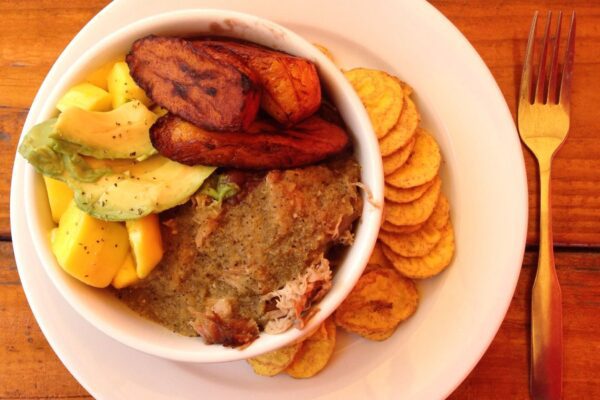
The History of Paladares
Paladares emerged in the 1990s during Cuba’s “Special Period,” a time of severe economic hardship after the fall of the Soviet Union. With foreign aid drying up and food shortages widespread, the government allowed certain forms of private enterprise to keep the economy afloat. Among these new allowances was the right to open a small restaurant in one’s home, under strict regulations. It was during this time that we also saw casa particulars come to the fore as places to stay, supporting the Cuban people.
- Read my guide to Casa Particulars.
- Here’s my guide to visiting Cuba under the OFAC category “Support for the Cuban People”
Initially, paladares were limited to 12 seats, could only employ family members, and were forbidden from serving certain foods like beef or shellfish. Despite these restrictions, they flourished.
Why Paladares Were Forbidden from Serving Certain Foods
When the Cuban government first legalized paladares in the 1990s, it did so with a long list of restrictions—most notably a ban on serving certain high-demand foods such as beef, lobster, and shrimp. This may seem strange to visitors, but the reasons are deeply tied to Cuba’s economic structure and food policies.
1. State Monopoly on Scarce Goods
Foods like beef and shellfish have historically been controlled by the Cuban state, which manages their distribution through tightly regulated channels. Beef, in particular, has been rationed for decades and is often reserved for children, hospitals, and vulnerable populations. The state feared that allowing private businesses to buy and sell these scarce goods would divert supplies away from the general population and create a black market.
2. Symbolic and Political Value
In Cuba, beef is not just a meal—it’s a politically sensitive resource. The government’s control over livestock and fisheries is part of its broader effort to ensure food equity and prevent price gouging. Allowing private restaurants to serve beef or lobster could be seen as privileging tourists or the elite, which ran counter to socialist principles.
3. Preventing Corruption and Resource Diversion
Officials also worried that employees in the state food system—such as fishermen or meat plant workers—might illegally siphon off premium goods to supply paladares. By banning these items from private menus, the government tried to reduce the incentive for theft and corruption.
4. Paladares today CAN serve lobster, some even beef
Over time, some of these restrictions have relaxed. Today, many paladares do serve lobster and shrimp, and some even find ways to source beef—though it may still be regulated or technically illegal in some cases. The evolving rules reflect Cuba’s gradual opening to private enterprise, as well as its need to cater to tourism without undermining public supply chains.
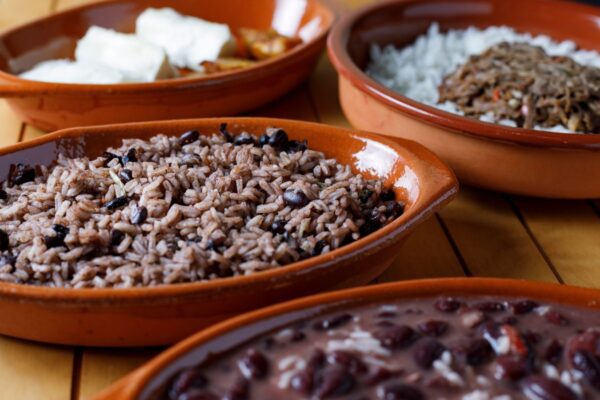
How Rationing and Shortages Affect Paladares
Even today, operating a paladar isn’t easy. Cuba’s ongoing system of food rationing and frequent shortages makes sourcing ingredients a daily challenge. Many ingredients—especially meat, cheese, and imported items—are hard to come by. Owners often turn to private gardens, black markets, or barter systems just to stock their kitchens.
Menus must be flexible and imaginative. On one visit, you may find a perfectly grilled lobster tail; on another, it might be unavailable due to supply gaps. But this limitation often leads to inventive cooking and seasonal menus that reflect what’s truly local and fresh.
Evolution over Time
As Cuba’s policies gradually evolved, restrictions eased. Paladares can now seat more guests, hire non-family staff, and serve a wider variety of foods. Today, some are full-fledged fine dining establishments with international chefs, sommeliers, and design-forward interiors. Others remain humble and homey—but no less delicious.
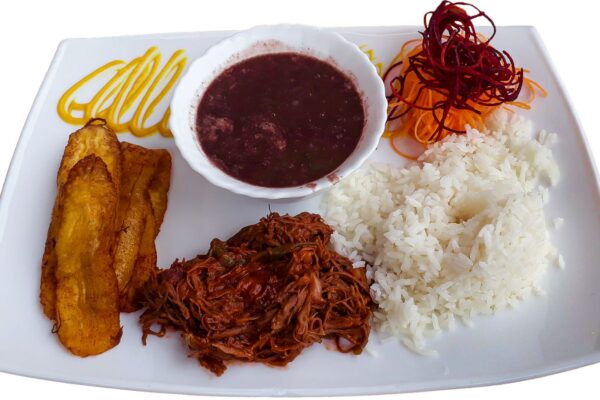
Why Paladares matter when you visit Cuba
Paladares are more than restaurants. They are:
- Cultural Hubs: Many showcase local art, music, and architecture.
- Economic Lifelines: They support families and local suppliers.
- Culinary Time Capsules: Many preserve regional recipes and cooking methods.
- Symbols of Resilience: They exemplify how Cubans adapt, thrive, and create joy even in the face of scarcity.
They offer something few places do: a direct window into everyday Cuban life. If you’re visiting from the USA using the “Support for the Cuban People” OFAC category, then eating at paladares is PERFECT.
What Makes a Paladar Unique
No two paladares are the same, but here’s what you’ll often find:
- Intimate Settings: Think candle-lit courtyards, rooftop terraces, or antique-filled dining rooms.
- Personal Service: Owners often greet you themselves, and the staff is usually family.
- Evolving Menus: Chefs build meals around what’s fresh and available.
- Atmosphere: Music, conversation, and a deep sense of place—whether elegant or rustic.
Notable Paladares to Visit in Cuba
If you’re not sure where to start, here are a few favorites:
- La Guarida (Havana) – Made famous by the Cuban film Strawberry and Chocolate, this paladar mixes film history with fine dining in a faded mansion.
- San Cristóbal (Havana) – Known for hosting President Obama, it blends antiques, Cuban kitsch, and elevated cuisine.
- El Cocinero (Havana) – Located in an old factory, this modern, multi-level venue includes a rooftop lounge next to the famous Fabrica de Arte Cubano.
- Doña Eutimia (Old Havana) – A cozy, traditional spot known for hearty dishes like ropa vieja and yucca with mojo.
- Sol Ananda (Trinidad) – Offers colonial elegance and candlelight in a restored 18th-century house.
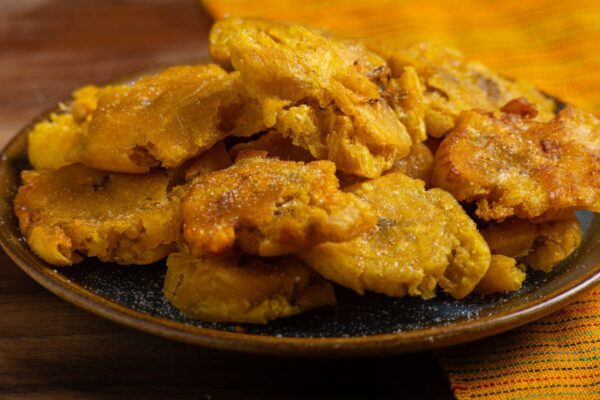
Where to Find the Good Paladares
While some of Cuba’s best-known paladares are already in the guidebooks, I’ve mentioned several above. However, many incredible spots remain hidden in plain sight. The key is knowing how—and where—to look. Here are a few tips to help you uncover the gems:
- Talk to Locals: Taxi drivers, casa particular hosts, and even museum staff are often your best source of up-to-date food recommendations.
- Explore Side Streets: Look for handwritten signs or ask around.
- Use Offline Maps and Apps: Try Maps.me, AlaMesa, or Offline Google Maps.
- Follow the Locals: A line outside usually means good, affordable food.
- Go Beyond Havana: Smaller towns offer rustic but heartfelt options.
- Look for Government Licenses: Often posted near entrances for legitimacy.
Tips if you want to visit Paladares
Here’s how to get the most out of your paladar experience:
- Do Some Research: Not all paladares are equal—check reviews or ask locals.
- Make a Reservation: Popular spots can fill up, especially in Havana.
- Be Flexible: Menus may vary based on availability. Trust the chef’s recommendations.
- Bring Cash: Some places don’t accept credit cards.
- Try the Classics: Look for ropa vieja, grilled lobster, malanga fritters, or Cuban flan.
Final Words on Experiencing Paladares in Cuba
Visiting a paladar is about more than food—it’s about experiencing Cuba through the eyes, hands, and hearts of its people. These restaurants offer a rich blend of history, flavor, and community that state-run establishments simply can’t replicate. If you’re a curious traveler hungry for authenticity, skip the tourist traps and step into a paladar. You might just leave with a full stomach and a new understanding of Cuba’s past, present, and personality.
Cuba’s Best is a participant in the Amazon Services LLC Associates Program, an affiliate advertising program designed to provide a means for sites to earn advertising fees by advertising and linking to amazon.com, amazon.co.uk, amazon.ca. Amazon and the Amazon logo are trademarks of Amazon.com, Inc. or its affiliates.
